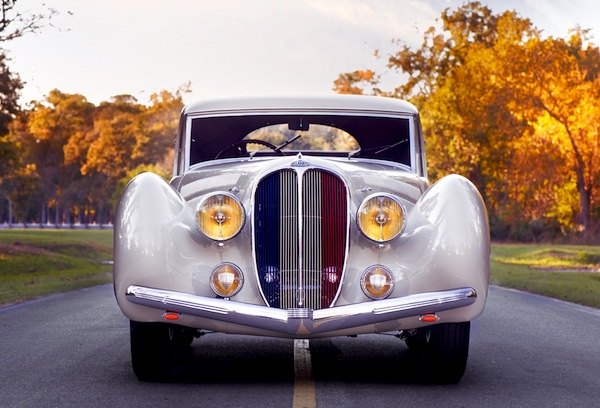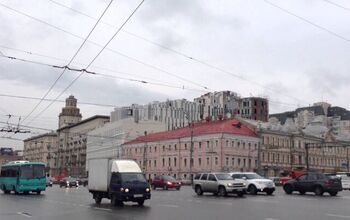Best Selling Cars Around The Globe: What Future For French Manufacturers? (Part 2)
* Check out Part One of this Special Report on French manufacturers here *
This is Part 2 of my special feature on the future of French manufacturers. You can see Part 1 here.
After evaluating both PSA and Renault through their European sales, overseas sales, international alliances and low cost models, we continue on this study of what lies ahead for French carmakers by going through 3 additional elements of comparison.
5. Luxury segment
This is one of the 10 things I (cheekily) don’t understand in the automobile world today. After a golden age when Delage, Delahaye and other Panhard were the pinnacle of refinement, nowadays French manufacturers have all but given up on luxury – partly because of decades of incentives to build small cars by a French government bent on heavily taxing larger, more powerful vehicles. Heck even French prestige boutique manufacturer Bugatti is now owned by Volkswagen along with Porsche, Lamborghini and Bentley…
The thing is, when managed well, the luxury segment is extremely profitable and a luxury brand can do wonders to help a mass manufacturer survive and thrive. In almost any other luxury category, the French are masters of the universe. Chanel perfume, Louis Vuitton bags, Moët & Chandon champagne, Hermès scarves and Louboutin heels continue to rack up stratospheric sales and churn billions of dollars,In the automotive world, French luxury has gone missing.
Both Renault ( Vel Satis anyone?) and Peugeot have given up, leaving to Citroen the task of getting back into luxury with its DS sub-brand, launched as a separate brand in China last year. Sales of DS models are plateauing in Europe at 110,554 units in 2013, down 6% on 2012 (but still in league with Land Rover). Audi, BMW & Mercedes all outsell DS bya ratio of 6 to 1 and more importantly, are either stable or improving in a deflated market. The DS3 is the only DS model to gain ground in 2013 at +2% thanks to the launch of a convertible version, while the DS4 is down 14% and the DS5 down 17%. With no new launch planned until 2016, it’s hard to see DS models enjoying a second wind soon.
If not in Europe, where can DS be successful? In China of course! PSA hopes the DS brand will improve its profitability there and has kicked off the local production of the DS5 last October through a new joint-venture with ChangAn. But really, what the Chinese want is a souped up luxury SUV like the DS Wild Rubis Concept. A ‘civilian’ version of this concept will be presented at the Beijing Auto Show in April. I think it will sell like hot cakes in China and the whole of Asia.
6. Perceived quality
Renault has come a long way to now manufacture cars considered reliable by the general public, however its recent models (Mégane, Laguna, Latitude and Koleos) are often perceived by consumers as dull, sad and charmless in spite of their robust diesel engines and handling qualities. The new Clio IV and Captur have won over many hearts, mainly due to their daring design, however worldwide car magazines often criticise the poor quality of the materials, blatantly showing cost reduction at play.
PSA is in a different place at the moment, with its recently launched Peugeot 208, 2008, 308, 508, Citroen C4 Picasso and C-Cactus hitting the mark in both the design and driving pleasure aspects. The 308 even won the coveted title of 2014 European Car of the Year earlier this month. The DS line, albeit a little controversial with car experts, also helps with the perceived quality of the PSA Group. All of this is good and well, but the large majority of the models mentioned above are very little known outside of Europe where the large bulk of sales are happening with either the low-cost range for Renault or older models like the first generations C4 and 308 (in China) or 206+ (in South America) for Peugeot. So PSA needs to bring these new models in fast if they want their perceived quality to not be stuck in the nineties in emerging markets.
7. Brand differentiation
Having worked in advertising in my previous life, this is my pet peeve. As car manufacturing groups, PSA and Renault must have a clear and differentiated positioning for each of their brands in order to be as profitable as possible. Case in point is the Volkswagen Group, to me one of the best examples of very effective brand differentiation. In their stable of brands, perhaps only Seat is still finding its bearings, but Volkswagen, Audi, Skoda, Porsche, Bentley, Lamborghini and Bugatti all have a crystal clear positioning and rarely compete with each other, avoiding cannibalization. This enables the group to progressively increase the average price of each model and pull each brand up, while reducing production costs by using the same platform for dozens of models, resulting in exponential profitability. One could argue that there is now room below Skoda to introduce a low-cost brand that would undercut Renault’s Dacia.
It seems simple when it’s well done, but this is a bloody hard task.
Let’s look at Renault first. I have to admit I wasn’t a fan of selling Dacias in the same showroom as Renaults, as I couldn’t for the life of me understand how someone could leave the shop with a Renault Kangoo for the price of two Dacia Dokkers – basically the same car, for far less money. However careful observation and many dialogues with consumers and dealers have made me realise that Renault has actually managed to differentiate Dacia completely from its main brand, while still helping its success by ‘guaranteeing’ it (“Dacia by Renault”). It’s simple: Renault competes with other mass brands and Dacia competes with used cars, not with Renault. When it becomes tricky is where Renault sells Dacia models under the Renault brand, for example in Russia and South America.
Here too my opinion has changed, having traveled to both these areas of the world where a new car is still very aspirational. To better understand how Renault was right to not launch the Dacia brand in emerging markets, you have to give up your Westernised mind and understand that a Renault Logan is actually not a low cost car there. It competes at the core of the market, alongside antediluvian Chevrolets that have been in production for 20 years (Brazil) or against cheaper Chinese cars (Russia). Launching a new brand would have been way too risky and expensive. Now this is where I disagree with most car websites and analysts: selling the Logan, Sandero and Duster DOES NOT hurt the Renault brand in emerging markets, in fact it cements an image of honest, robust cars that don’t trick you with fluffy accessories, are easy to maintain and that you can rely on. A good car in the purest sense of the term.
Renault has managed to pull the trick of launching a low-cost range in both sophisticated and emerging markets, while increasing that range’s profitability and not letting anything spill over to the main brand. No other manufacturer in the world has been able to do this yet, so well done.
Now onto PSA. Since the eighties, Peugeot and Citroen have basically been selling the same models with a (sometime not so) different look. Recently, PSA announced a new positioning for their brands: Citroen will do ‘practical’ cars with its C range, and the C4 Cactus is the emblem of this new philosophy, Peugeot will go a little up-market to be ‘semi premium’ and compete with Volkswagen and the DS range, which could (should) become a brand on its own in Europe, is premium. We saw in Part 1 of this Report that a new low-cost brand, Dongfeng’s Fengshan, could well insert itself at the bottom of this ladder.
Yes I know this makes years of Citroen World Rally Car investments redundant, but whether you currently agree with this positioning choice or not is besides the point. What will make or break this strategy is decades (yes, decades) of consistently acting it. Whether it be Citroen’s new positioning or DS’ one, but it will be harder for DS. Look at Audi: in the early seventies it was Volkswagen’s poor parent. It took almost 40 years to the VAG Group to get Audi to where it is right now. PSA should not expect the DS brand to achieve the same success in less time. It will take a long, long time and a lot of money to establish a new premium brand in the automotive world, but it is possible. Carlos Tavares agrees and said “remaking the Citroen DS sub-brand into a full-fledged marque that can compete with the likes of Audi and other luxury automakers may take two decades.”
Conclusion
But are French manufacturers currently making money? Renault made a €1.2 billion profit in 2013 mainly thanks to Nissan, ( see its full 2013 Financial results here) and PSA made a €560 million loss ( Full 2013 Financial results here). Which makes PSA’s €3 billion capital increase to Dongfeng and the French state announced last month all the more welcome. Had I written this article a couple of years ago, I would have had not much hope of survival for either manufacturer. But both Renault and PSA, albeit in very different situations regarding their alliances with other manufacturers and with very different strategies, seem to have faced the inevitable and acted upon it, gearing themselves up for battle in the coming 5 years.
To me Renault is still better equipped for the future because it is supported by an alliance, while PSA is still doing it (almost) alone. But I don’t see any of them disappearing in the near future. The two Carlos (Ghosn and Tavares) are unbelievably smart chief officers that know how to steer the behemoths that are Renault and PSA in the right direction.
More by Matt Gasnier
Latest Car Reviews
Read moreLatest Product Reviews
Read moreRecent Comments
- ToolGuy These would have sold better with a more prominent grille design.Source: BMW
- Cprescott Not legal. Executive branch cannot fund jack. This is Congressional authority.
- FreedMike I'm sure it's a nice enough car, but dear Lord, are these ugly, and it's a lot worse in light colors.
- Fred If the guy behind me had auto braking maybe he wouldn't have rear ended me and totaled my car. Even with insurance it would of saved me $10g and I'd still have my safe driving discount.
- SCE to AUX I don't really understand what this money does, but if it's for The Children, then I'm all for it.












































Comments
Join the conversation
"The interesting thing about the French nation, I think because they are essentially peasants and communists, is that they are quite good at the fairly small and fairly simple car." ---James May
That is the reason I like the British-produced Top Gear better than any of its clones. Their irreverent, non-politically correct quips, which are nevertheless very funny, make the show a blast.